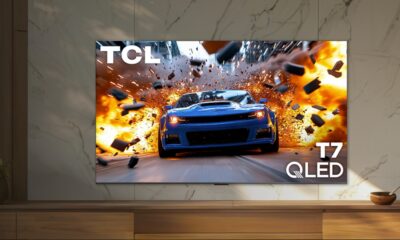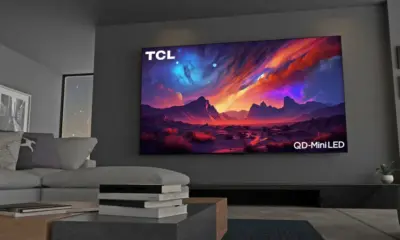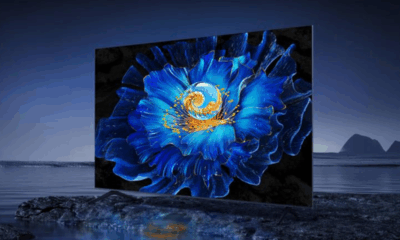News
Hisense Xiaomo E5Q TVs Bring Big Specs in Budget to the Fight Against TCL
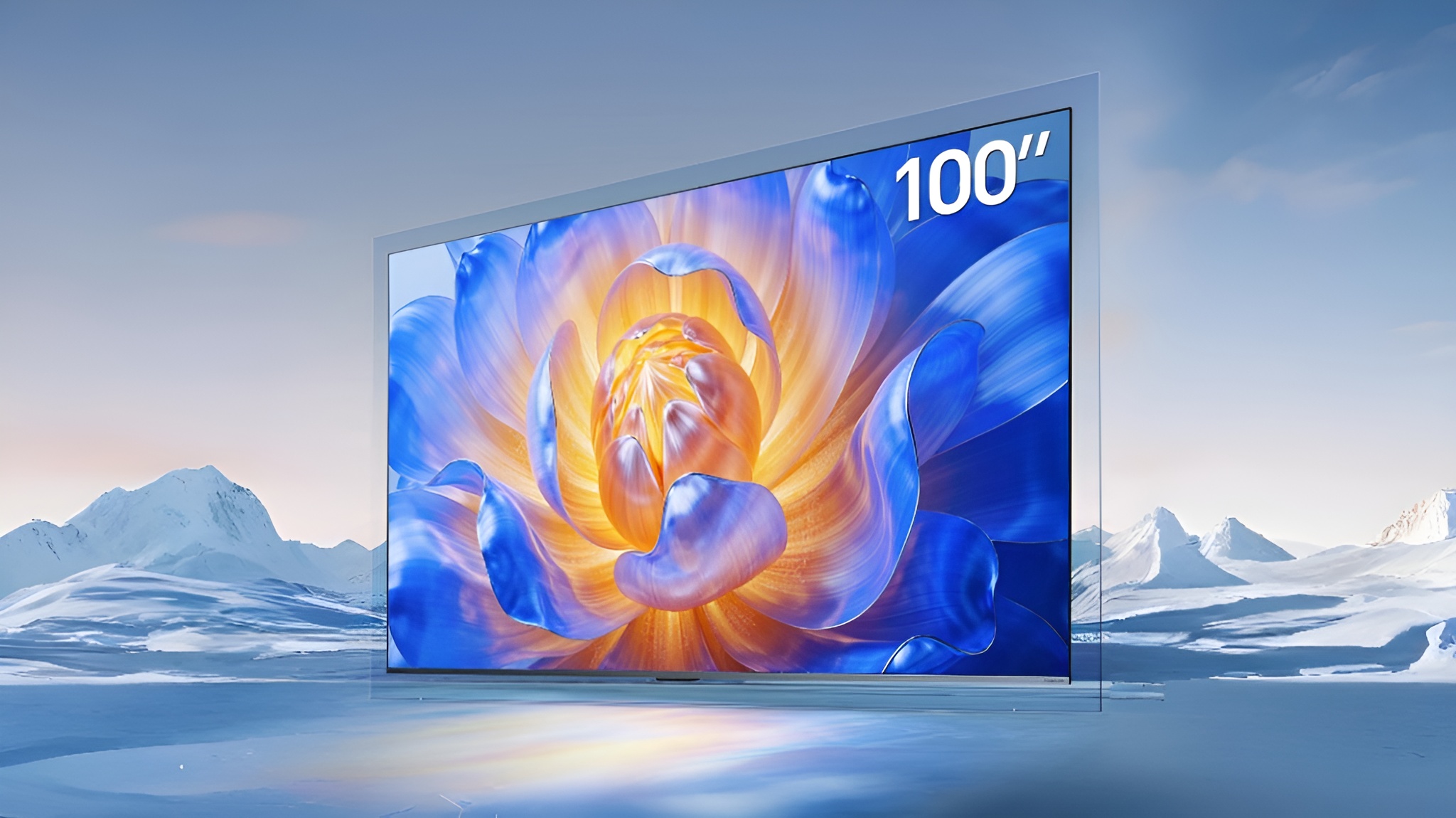
TCL‘s arch-rival Hisense is taking a bold swing at the mid-range market with the new Xiaomo E5Q series. It features Mini LED technology, high refresh rates, and AI-powered smarts, all wrapped in a sleek, minimalist chassis that starts at just 2,199 yuan (around $305) in China.
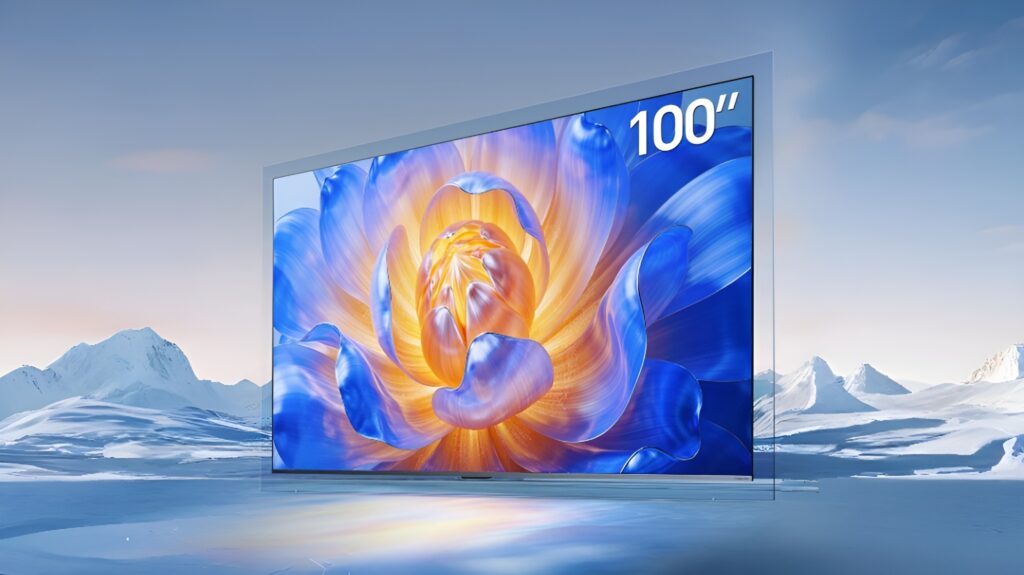
Hisense Xiaomo E5Q TV Specifications
The series spans six sizes, from 50 inches to 100 inches. It equips the U+ Mini LED Pro display system, starting with 128 local dimming zones on the 50-inch model and scaling up to 608 zones on the 100-inch variant. It comes with dot-matrix backlighting and lens-based light focusing, allowing precise control over contrast and brightness. The panel supports HDR10, reaches up to 1200 nits peak brightness, and delivers full 4K HDR rendering.
These TVs support over 1 billion colors, cover 95–96% of the DCI-P3 color space, and maintain a color accuracy of ΔE≈1.2 for professional-grade fidelity.
The 100-inch variant sports a native 150Hz refresh rate and unlocks up to 300Hz in Game Mode through HDMI 2.1. It features MEMC motion smoothing and comes with a dedicated Game Control Center compatible with Nintendo Switch, Xbox, and PlayStation consoles.
It runs on AI features powered by the DeepSeek large model, supporting real-time scene optimization, smart viewing modes, and curated educational and sports content. It comes with built-in voice control, offering seamless interactions with the smart UI.
The larger models feature a 2.1.2 channel Hi-Fi-grade audio system with a 25W subwoofer and 91W total output. It sports Hisense’s Hi-Sound Pro audio engine, which tunes sound based on scene context for immersive playback.
The smart interface runs on Android 11. It comes with up to 4GB of RAM and 128GB of internal storage. For connectivity, it supports Wi-Fi 6, Bluetooth 5.0, USB 3.0, dual HDMI 2.1 ports, and equips a smart 2×2 MIMO antenna system for improved wireless performance.
Pricing and Availability
The Hisense Xiaomo E5Q TV series is available in six size variants, with pricing that scales based on both screen size and features. The lineup starts at 2,199 yuan (~$305) for the 50-inch model and moves up through 55-inch (2,999 yuan, ~$415), 65-inch (3,799 yuan, ~$530), 75-inch (4,899 yuan, ~$685), and 85-inch (6,799 yuan, $950) configurations.
The top-tier 100-inch version is priced at 11,999 yuan ($1,675) and includes a bundled delivery and installation service.
In related news, LG Display becomes the first to mass-produce blue PHOLED panels, while TCL faces new competition as Samsung rolls out QEF1 QLED and Crystal 4K UHD smart TVs in India.
(Source)
News
TCL T7 QLED TVs unveiled with 4K, 144Hz refresh & Google TV, starting at $599.99
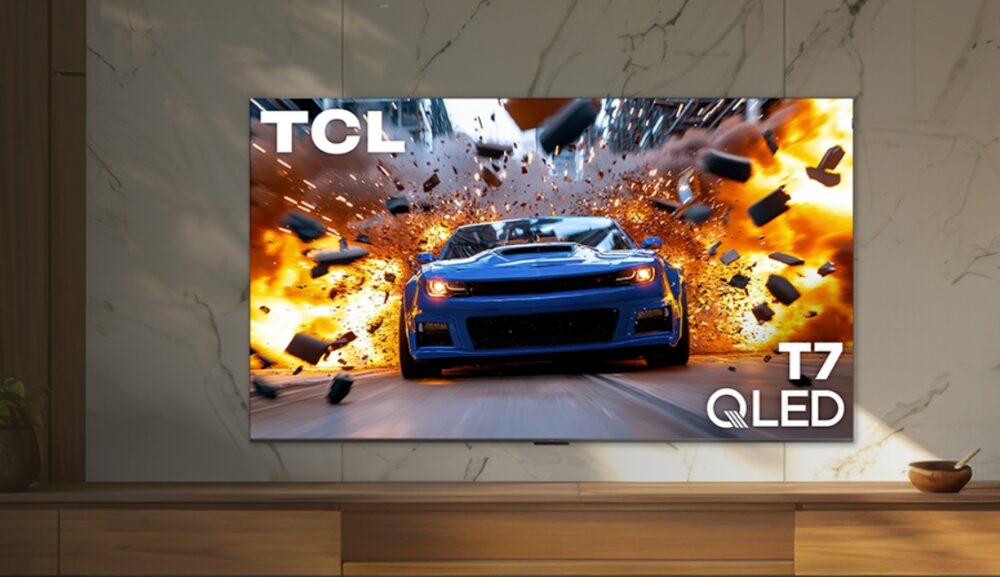
TCL is expanding its 2025 Google TV lineup with the new T7 Series, a range of 4K QLED TVs that promise high refresh rates, rich visuals, and strong gaming credentials without breaking the bank. Announced as a more affordable alternative to its high-end QD-Mini LED sets, the TCL T7 QLED TVs slot neatly into the mid-tier with plenty of premium touches.
TCL T7 4K QLED TV Specifications
The T7 Series is available in four sizes: 55, 65, 75, and 85 inches. While the 55-inch model sticks to a 120Hz native refresh rate, the larger models bump that up to 144Hz, making them suitable for fast-paced gaming and sports. TCL pairs its Quantum Dot panels with the AiPQ Pro processor, which handles real-time color and contrast adjustments for better 4K HDR visuals. Support for HDR10, HDR10+, Dolby Vision, HLG, and Open HDR is standard across the lineup.
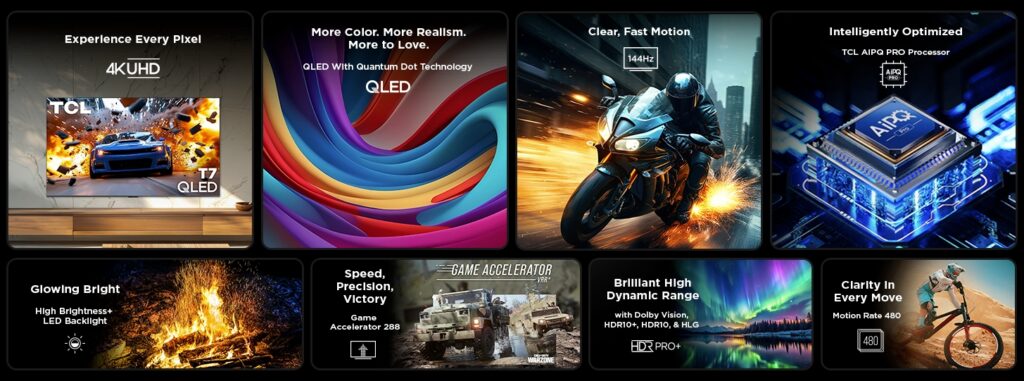
Audio gets a solid upgrade too. All models feature Dolby Atmos and Dolby Digital+ support, with the 85-inch version stepping up to a 2.1-channel Onkyo speaker setup with 40W output. For connectivity, users get four HDMI ports (including eARC), USB 3.0 and 2.0, Ethernet, and Wi-Fi 5. The TVs also support Chromecast, AirPlay 2, and voice assistants like Alexa, Google Assistant, and Apple HomeKit.
Running on Google TV, the T7 Series offers access to thousands of apps, hands-free voice control via far-field mics, and smart home integration. It also supports Apple and Android casting, plus advanced gaming features like Game Accelerator 288 and Auto Low Latency Mode.
Prices start at $599.99 for the 55-inch model and go up to $1,399.99 for the 85-inch. TCL hasn’t confirmed an exact release date yet, but the T7 Series looks positioned to challenge more expensive QLED and Mini LED rivals in 2025.
In related news, we recently explored what makes the RayNeo Air 4 AR glasses stand out.
Featured
What’s So Special About the RayNeo Air 4 AR glasses?

RayNeo has officially launched the Air 4 series in China, bringing major improvements in display, performance, audio, and comfort. The lineup includes the standard Air 4 and the premium Air 4 Pro. While its predecessor, the Air 3s Pro, continues to sell globally, the Air 4 series has just debuted in China and is expected to expand internationally in 2026. Let’s take a closer look at what makes this new generation of AR glasses stand out.
World’s First HDR10 AR Glasses
The RayNeo Air 4 is the first AR glasses product to support HDR10, setting a new benchmark for display technology in the category. The glasses include AI-powered SDR-to-HDR conversion, which upgrades non-HDR content to HDR quality on the fly. This enhancement improves contrast, deepens blacks, and boosts color depth without user intervention. The 1200-nit peak brightness ensures clarity even in well-lit environments.
Vision 4000 Display Processor
Both the Air 4 and Air 4 Pro use the Vision 4000 image-processing chip, co-developed by RayNeo and Pixelworks. The chip handles real-time tone mapping, white balance adjustment, and contrast enhancement. The Air 4 Pro supports 10-bit color output, delivering 10.7 billion colors, which results in a 64x improvement in tonal depth over standard 8-bit displays. This processing power ensures that image quality remains consistent across varied content and lighting conditions.

Micro-OLED Display and 3D Support
The glasses use 0.6-inch dual-layer Micro-OLED panels with support for 1920×1080 resolution in 2D and 3840×1080 in 3D mode. They simulate a 135-inch virtual screen viewed from 4 meters, suitable for streaming, gaming, or multitasking. With a 200,000:1 contrast ratio and 98% DCI-P3 color coverage, the display produces rich blacks, vibrant highlights, and accurate tones. The 120Hz refresh rate supports fluid motion during gameplay and high-frame-rate video.
TCL Optical Engine
RayNeo integrates TCL’s second-generation Peacock Optical Engine 2.0 across both models. The optics system benefits from TCL’s display calibration expertise and pushes color coverage up to 145% sRGB. The engine supports precise color tuning that meets the needs of video professionals and content creators. Visuals remain accurate, natural, and free from color drift, even in high-contrast scenes.

Bang & Olufsen Audio
The Air 4 series introduces a four-speaker audio system co-engineered with Bang & Olufsen. It supports spatial 3D surround sound, uses large polymer diaphragms, and employs a proprietary DAC algorithm to maintain clarity and balance. The sound-guiding fins reduce leakage by up to 80%. Whisper Mode focuses sound into the ears, ideal for quiet environments. The Air 4 Pro adds Surround Mode, expanding the soundstage for immersive content.
Comfort and Fit
RayNeo maintains a lightweight design at 76 grams across both models. The frame uses a balanced 46.7:53.3 front-to-back weight ratio to reduce strain on the nose and ears. The temples offer nine levels of adjustment, while the nose pads include three positioning levels, allowing the headset to fit a wide range of face shapes. Prescription lens support adds flexibility for nearsighted users.
Compatibility and Charging
The Air 4 series connects to smartphones, tablets, laptops, and gaming consoles, including the upcoming Nintendo Switch 2, using USB-C or HDMI adapters. The glasses support up to 100W Power Delivery passthrough charging, allowing users to continue viewing or gaming while their device charges in the background. This makes them suitable for long usage sessions without power interruptions.
In related news, global TV shipments fell below 50 million units in Q3 2025, marking a 4.9% year-over-year decline, and Redmi’s product manager stated that RGB OLED represents the future of display technology.
News
Global TV Shipments Slip Below 50 Million Units in Q3 2025, Down 4.9% YoY
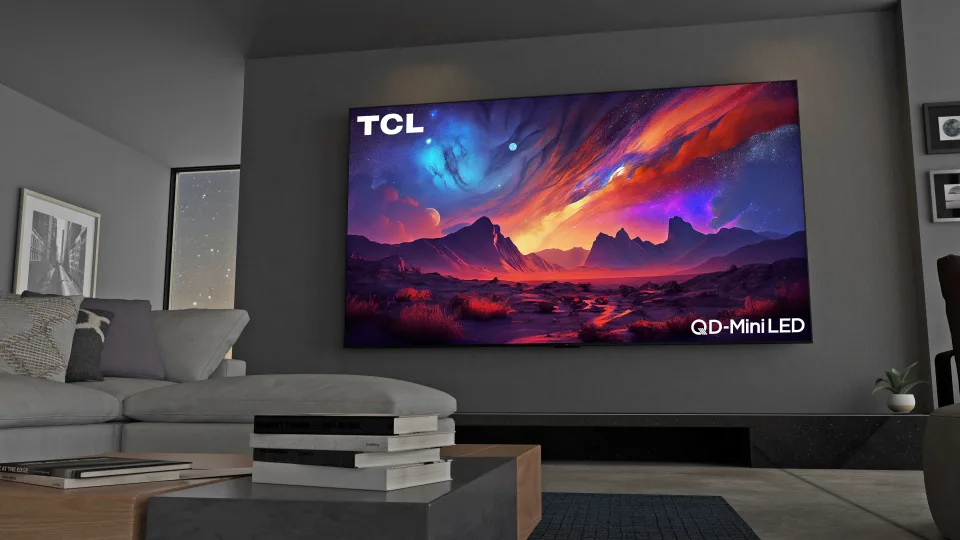
Global TV shipments are showing signs of fatigue. According to the latest data from TrendForce, total shipments in the third quarter of 2025 dropped to 49.75 million units, a 4.9% year-over-year decline, and the first time Q3 figures have dipped below the 50 million mark. Despite a 6% sequential uptick from Q2, the market continues to face headwinds from weaker consumer demand and shifting global dynamics.
TrendForce attributes the slump to extended replacement cycles and the early pull-forward of demand caused by economic uncertainty. In China, where government subsidies previously helped boost local sales, the fading of those incentives has led to a measurable contraction in the domestic market. Together, these factors have slowed momentum for an industry still recovering from the post-pandemic surge in TV upgrades.
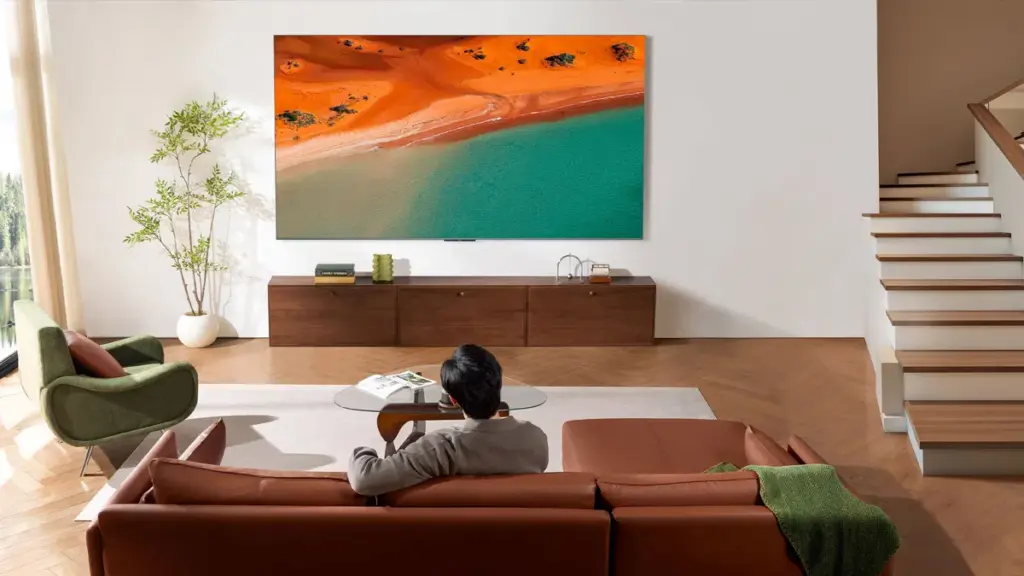
The research firm expects a rebound in Q4 as brands push through heavy promotional activity during key shopping seasons like Double 11 and Double 12 in China, as well as Black Friday in Western markets. Shipments are forecast to climb 7.3% quarter-on-quarter to 53.21 million units. Even so, full-year figures are projected to total just 195.59 million units, a 1.2% annual decline.
Samsung maintained its lead as the top global TV brand, followed by Hisense, TCL, LG Electronics, and Xiaomi, together commanding 64.3% of total shipments. Hisense saw the biggest momentum shift, moving from a conservative first half to an assertive pricing strategy in the second. Its Q3 shipments rose 9.7% quarter-on-quarter to 7.66 million units, securing the second spot globally and a 15.4% market share, its highest yet.
While the U.S. market remains relatively stable, the global TV landscape appears to be entering a mature phase, one where innovation, affordability, and brand agility will define who leads the next growth cycle.
(Via)

